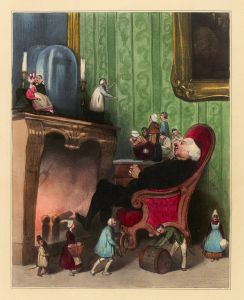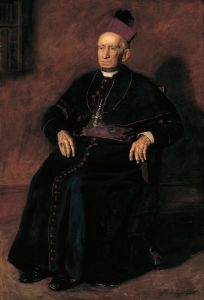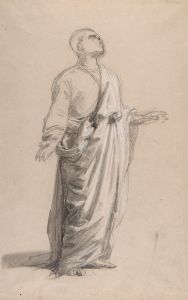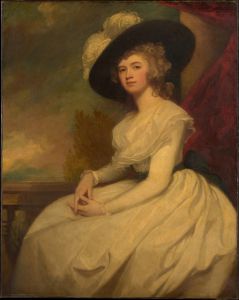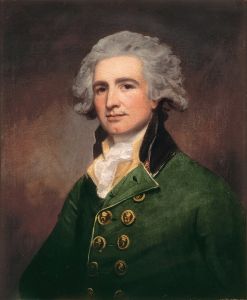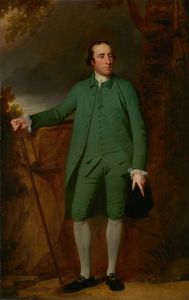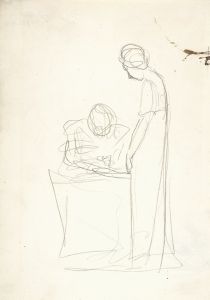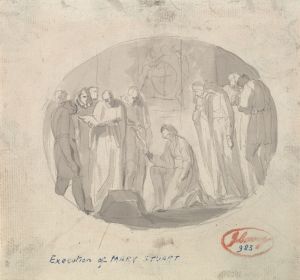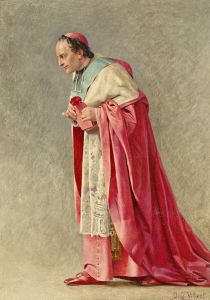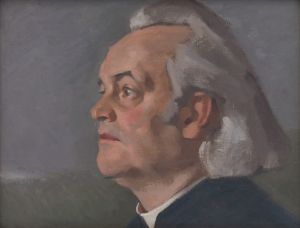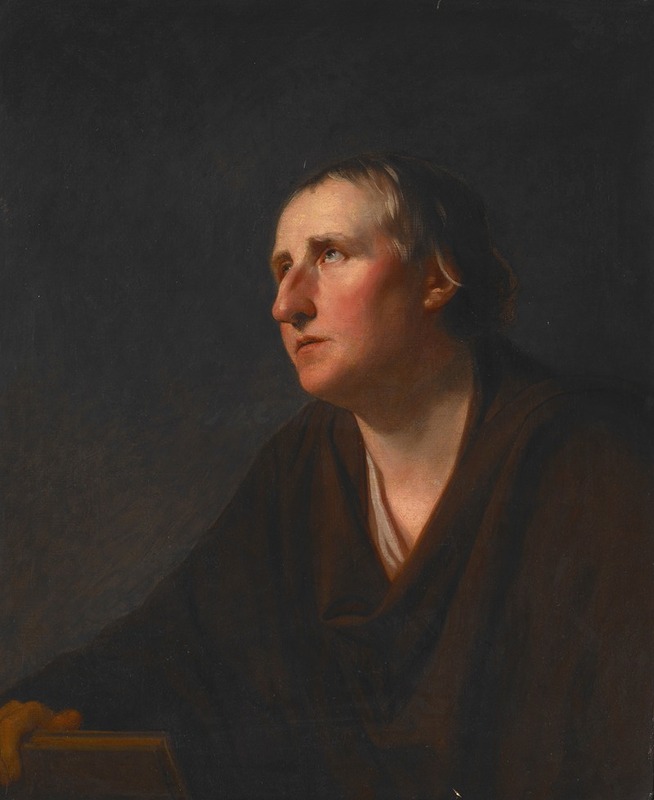
Portrait of Rev. Richard Stables
A hand-painted replica of George Romney’s masterpiece Portrait of Rev. Richard Stables, meticulously crafted by professional artists to capture the true essence of the original. Each piece is created with museum-quality canvas and rare mineral pigments, carefully painted by experienced artists with delicate brushstrokes and rich, layered colors to perfectly recreate the texture of the original artwork. Unlike machine-printed reproductions, this hand-painted version brings the painting to life, infused with the artist’s emotions and skill in every stroke. Whether for personal collection or home decoration, it instantly elevates the artistic atmosphere of any space.
The painting Portrait of Rev. Richard Stables is a work by the renowned British artist George Romney (1734–1802). Romney was one of the leading portrait painters of the late 18th century in Britain, known for his elegant and refined style. This particular portrait depicts Reverend Richard Stables, a clergyman whose life and role in society are reflected in the dignified representation typical of Romney's work.
George Romney was celebrated for his ability to capture the character and social standing of his sitters, and this portrait is no exception. The painting showcases Romney's mastery of composition, lighting, and detail, which were hallmarks of his artistic approach. The Reverend is portrayed with a calm and composed demeanor, emphasizing his status as a man of faith and intellect. Romney's use of soft, naturalistic tones and his attention to the textures of clothing and facial features contribute to the lifelike quality of the portrait.
The exact date of the painting is not definitively recorded, but it is consistent with Romney's active period as a portraitist, which spanned from the 1760s to the 1790s. During this time, Romney gained significant popularity among the British elite, creating portraits of prominent figures, including politicians, aristocrats, and clergy.
Little specific information about Reverend Richard Stables himself is readily available in historical records. However, his inclusion as a subject in Romney's body of work suggests that he was a figure of some importance or influence during his time. Clergymen were often depicted in portraiture during the 18th century as a way to convey their moral authority and social standing.
The painting is an example of Romney's ability to balance realism with idealization, presenting his sitters in a flattering yet authentic manner. It reflects the broader trends in 18th-century British portraiture, where the emphasis was placed on the individual's character and societal role.
As of now, the current location of the painting and its ownership history are not widely documented in public sources. Further research into archival materials or museum collections may provide additional context about the artwork and its provenance.
This portrait remains a testament to George Romney's skill as one of the foremost portrait painters of his era, capturing the essence of his subjects with grace and sophistication.






